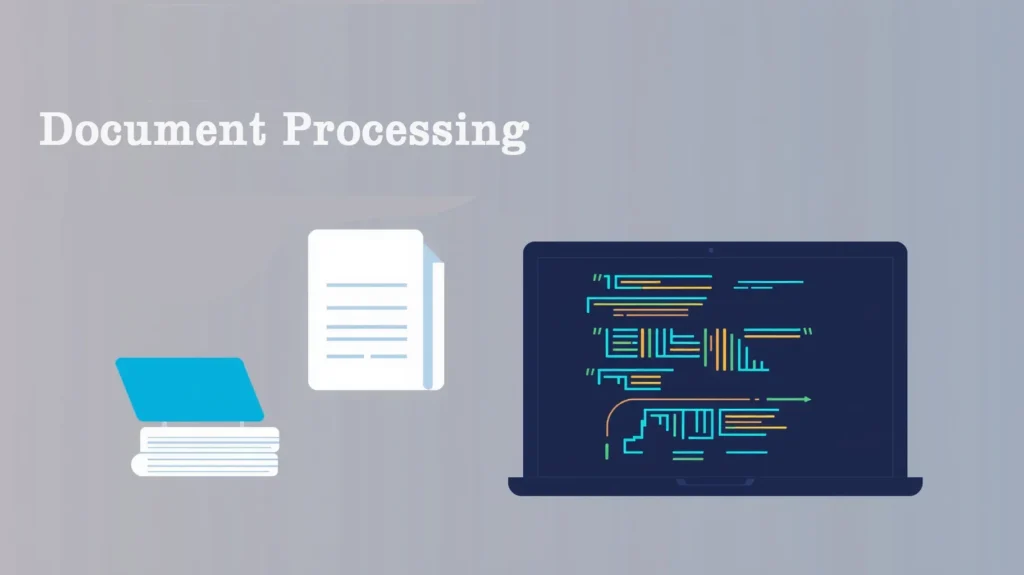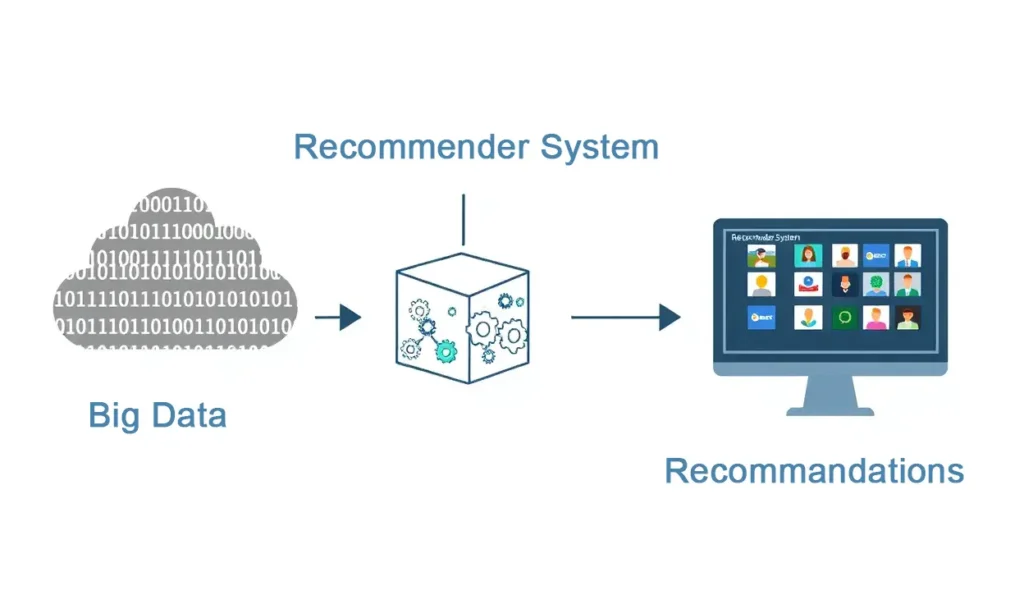
Building a recommendation system for your website might seem like rocket science, but it’s more accessible than you think. This guide walks you through the essential steps and concepts, ensuring you have the tools to create a personalized experience for your visitors.
Understanding Recommendation Systems
What Is a Recommendation System?
A recommendation system suggests relevant items, content, or products to users based on their preferences and behavior. Think Netflix’s movie suggestions or Amazon’s product recommendations.
These systems enhance user engagement, boost sales, and improve overall satisfaction by tailoring experiences.
Why Your Website Needs One
Whether you run an e-commerce store, a blog, or a streaming service, personalization is key. A recommendation system:
- Increases dwell time by offering engaging content.
- Boosts conversion rates by showing users what they want.
- Makes your site feel smarter and more intuitive.
Types of Recommendation Systems
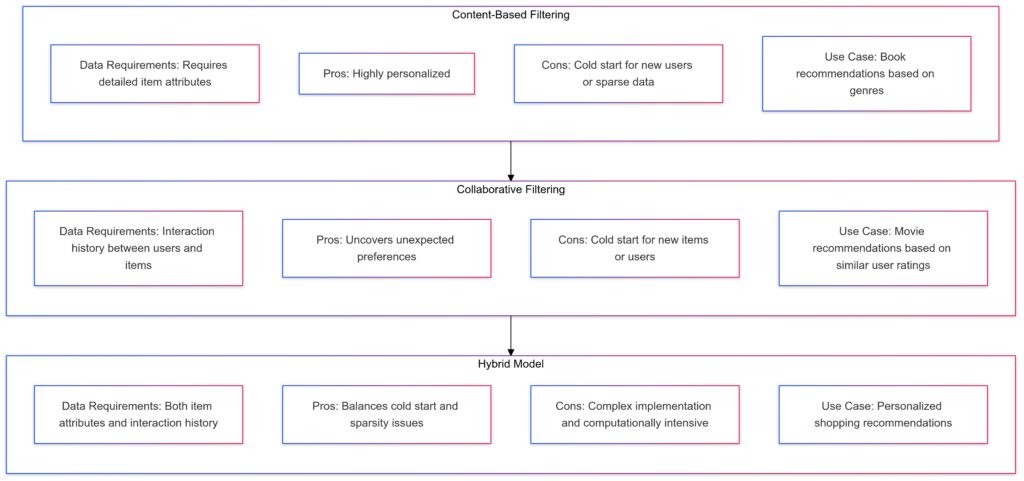
There are two main types:
- Content-based filtering: Suggests items similar to what a user has liked.
- Collaborative filtering: Uses the behavior of other users to recommend items.
Many modern systems combine both for better results.
Key Components of a Recommendation System
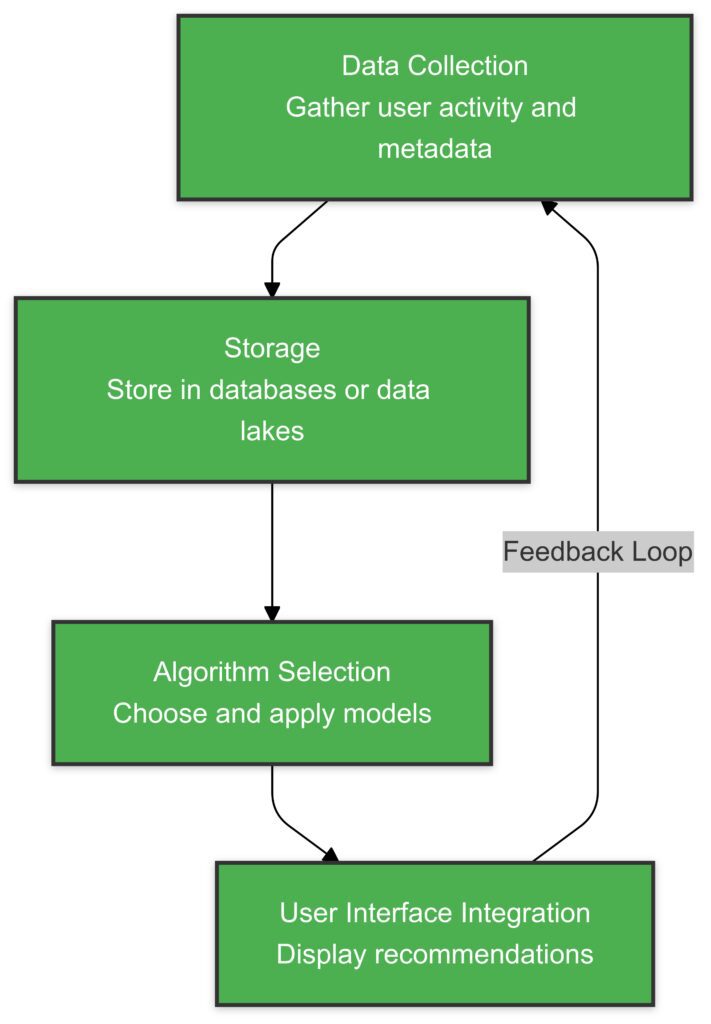
Data Collection: Gathers user interactions, item metadata, and additional context.
Storage: Consolidates and structures the collected data for processing.
Algorithm Selection: Applies machine learning or heuristic-based models for recommendation generation.
User Interface Integration: Displays the results to users, collecting feedback for iterative improvements
Data Collection
A recommendation system thrives on quality data. Collect data through:
- User activity tracking: Monitor clicks, views, and purchases.
- Feedback forms: Use star ratings or thumbs up/down to capture preferences.
Ensure your system complies with privacy laws like GDPR by informing users about data usage.
Data Storage
To build recommendations, you need to store and process data effectively. Options include:
- Databases: MySQL or PostgreSQL for structured data.
- Cloud storage: AWS or Google Cloud for scalability.
Consider indexing to speed up searches when your data grows.
Algorithms and Models
The brain of your recommendation system lies in the algorithms. Some commonly used ones are:
- K-Nearest Neighbors (KNN) for small datasets.
- Matrix Factorization for scalable collaborative filtering.
- Deep Learning models for complex scenarios.
User Interface Integration
Recommendations should be displayed in a clear, intuitive format. Common placements include:
- Product pages: “Customers also bought.”
- Blog articles: “You might also like.”
- Homepages: Highlight personalized suggestions prominently.
Getting Started: Tools and Frameworks
Programming Languages
To implement a recommendation system, you’ll primarily use:
- Python: Widely supported for machine learning.
- JavaScript: For integrating models with front-end components.
Popular Libraries and Frameworks
- Scikit-learn: Perfect for basic machine learning tasks.
- TensorFlow or PyTorch: For advanced, deep learning-based recommendations.
- Surprise: A Python library dedicated to building and analyzing recommendation systems.
APIs and External Tools
Don’t want to build from scratch? Try these pre-built solutions:
- Google Recommendations AI: Scalable and easy to integrate.
- Amazon Personalize: Great for e-commerce sites.
- RapidAPI: Access recommendation-related APIs for quicker deployment.
Preparing Your Dataset
Curating Your Data
Clean, organized data is the foundation of any successful recommendation system. Steps include:
- Data cleaning: Remove duplicates, handle missing values, and normalize formats.
- Feature extraction: Identify key attributes like product tags, genres, or categories.
Splitting the Data
For a machine learning model, split the data into:
- Training set: ~80% of the data for teaching the model.
- Test set: The remaining ~20% to validate predictions.
Handling Sparse Data
Recommendation systems often deal with sparse datasets (e.g., not all users rate every item). Tackle this by:
- Matrix Factorization to identify patterns.
- Cold start strategies: Use general trends for new users or items.
Defining Success Metrics
Evaluating Your Recommendations
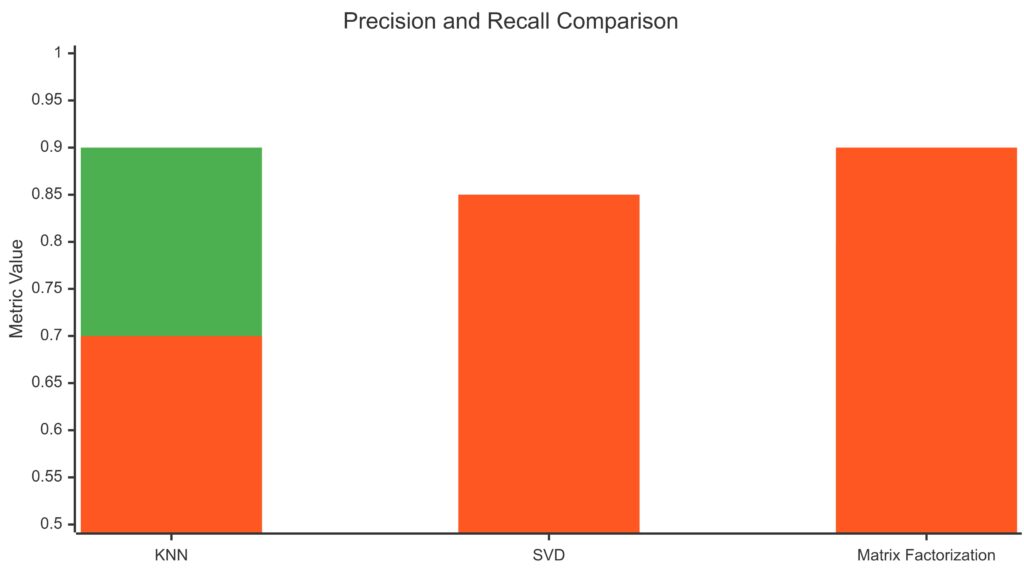
Green Bars: Represent Precision.KNN: 0.9, SVD: 0.85, Matrix Factorization: 0.8.
Orange Bars: Represent Recall.KNN: 0.7, SVD: 0.85, Matrix Factorization: 0.9.
This visualization emphasizes the trade-offs, where Matrix Factorization excels in recall but lags in precision, while KNN has higher precision but lower recall.
How do you know if your system is working? Key metrics include:
- Precision and recall: Measure how accurate and relevant the recommendations are.
- Click-through rate (CTR): Tracks how often users engage with suggested items.
- Conversion rate: Links recommendations to completed actions like purchases or sign-ups.
Designing the Recommendation Workflow
Mapping the User Journey
Identify where recommendations will appear in the user experience:
- Homepage suggestions: Engage visitors immediately.
- Product or content detail pages: Help users explore related options.
- Checkout or exit points: Upsell with complementary items.
This roadmap ensures recommendations align with user intent and improve their experience.
Deciding on Real-Time vs. Batch Processing
Your system can operate in two modes:
- Real-time: Instantly responds to user interactions.
- Ideal for live feedback or dynamic websites.
- Requires fast data pipelines and caching mechanisms.
- Batch: Processes recommendations periodically.
- Suitable for large datasets and less frequent updates.
- Easier to manage with tools like Apache Spark.
Establishing Feedback Loops
Incorporate user feedback to refine results:
- Explicit feedback: Collect user ratings or preferences.
- Implicit feedback: Monitor clicks, dwell time, and conversions.
This continuous loop improves system accuracy over time.
Coding a Basic Recommendation Model
Setting Up Your Environment
Before you begin coding, set up the necessary tools:
- Install Python and libraries like Scikit-learn or Pandas.
- Use Jupyter Notebook for an interactive coding environment.
- Prepare your dataset (e.g., CSV file with user interactions).
Example: Content-Based Filtering Model
Here’s how to implement a simple content-based recommendation system:
import pandas as pd
from sklearn.feature_extraction.text import TfidfVectorizer
from sklearn.metrics.pairwise import cosine_similarity
# Load your dataset
data = pd.read_csv('items.csv') # e.g., 'item_id', 'description'
# Convert text descriptions to numerical features
vectorizer = TfidfVectorizer(stop_words='english')
tfidf_matrix = vectorizer.fit_transform(data['description'])
# Compute similarity scores
cosine_sim = cosine_similarity(tfidf_matrix, tfidf_matrix)
# Function to get recommendations
def recommend(item_id, cosine_sim=cosine_sim, data=data, top_n=5):
idx = data[data['item_id'] == item_id].index[0]
scores = list(enumerate(cosine_sim[idx]))
scores = sorted(scores, key=lambda x: x[1], reverse=True)[1:top_n+1]
return [data.iloc[i[0]]['item_id'] for i in scores]
# Example usage
print(recommend('item123'))
This simple model uses TF-IDF (Term Frequency-Inverse Document Frequency) to measure similarity between items.
Collaborative Filtering Example
To implement collaborative filtering, consider using the Surprise library:
from surprise import SVD
from surprise import Dataset, Reader
from surprise.model_selection import train_test_split
from surprise import accuracy
# Load dataset
data = Dataset.load_from_df(ratings[['user_id', 'item_id', 'rating']], Reader(rating_scale=(1, 5)))
# Split data into training and test sets
trainset, testset = train_test_split(data, test_size=0.2)
# Train SVD model
model = SVD()
model.fit(trainset)
# Evaluate the model
predictions = model.test(testset)
print(f"RMSE: {accuracy.rmse(predictions)}")
This example uses Singular Value Decomposition (SVD), a popular collaborative filtering method.
Optimizing Your Recommendation System
Improving Accuracy
To enhance prediction quality:
- Feature engineering: Add meaningful data like user demographics or item categories.
- Hyperparameter tuning: Optimize model settings using grid search or Bayesian optimization.
- Hybrid models: Combine collaborative and content-based filtering.
Scaling Your System
For growing websites, ensure scalability by:
- Implementing distributed computing with Apache Spark.
- Using NoSQL databases like MongoDB for fast read/write operations.
- Deploying models via cloud platforms like AWS or GCP.
Handling Cold Start Problems
Address challenges when new users or items have no historical data:
- For users: Use general trends or ask for explicit preferences.
- For items: Recommend based on metadata like tags or categories.
Deploying the Recommendation System
Building an API for Integration
Wrap your model in a REST API for seamless integration with your website. Using Flask:
from flask import Flask, request, jsonify
app = Flask(__name__)
@app.route('/recommend', methods=['GET'])
def recommend_endpoint():
item_id = request.args.get('item_id')
recommendations = recommend(item_id)
return jsonify(recommendations)
if __name__ == '__main__':
app.run(debug=True)
Host this API on platforms like Heroku or AWS Lambda for live use.
Integrating with Your Website
Connect your recommendation API to the front-end using JavaScript or AJAX. Ensure the UI:
- Displays results dynamically.
- Highlights personalization for better engagement.
Testing and Monitoring
Conducting A/B Testing
Compare the recommendation system’s performance with and without it:
- Test metrics like CTR, conversion rate, and user retention.
- Adjust algorithms based on results.
Monitoring System Health
Track key metrics to ensure reliability:
- Latency for API response times.
- Accuracy metrics like precision/recall over time.
- Error rates or failed recommendations.
Advanced Techniques for Recommendations
Hybrid Recommendation Models
To achieve better results, combine content-based and collaborative filtering methods. Hybrid models overcome limitations like the cold-start problem and sparse datasets.
How Hybrid Models Work
- Use weighted blending: Combine predictions from both models using pre-determined weights.
- Build meta-models: Train a machine learning model that considers both content and collaborative inputs.
Example framework: Use LightFM in Python, which supports hybrid approaches.
from lightfm import LightFM
from lightfm.datasets import fetch_movielens
# Load dataset
data = fetch_movielens()
# Train hybrid model
model = LightFM(loss='warp')
model.fit(data['train'], epochs=30, num_threads=2)
# Predict recommendations
recommendations = model.predict(user_id, item_ids)
This allows you to include both user interaction data and item metadata.
Context-Aware Recommendations
Incorporate contextual factors like:
- Time of day: Suggest breakfast items in the morning.
- Location: Highlight region-specific content.
- Device type: Optimize for mobile users.
Use tools like TensorFlow Recommenders to integrate context.
Reinforcement Learning for Dynamic Systems
Use reinforcement learning to adapt recommendations in real time based on user interactions. Libraries like Ray RLlib can help you build scalable models for this purpose.
Personalizing Recommendations
User Segmentation
Group users based on behavior or demographics:
- New users: Offer generic suggestions to gather data.
- Frequent visitors: Focus on their preferences.
- High-value users: Highlight premium or exclusive options.
Use clustering algorithms like K-Means to identify these segments.
Dynamic Recommendation Updates
To keep suggestions fresh and relevant:
- Regularly retrain your model with the latest data.
- Implement real-time updates using streaming tools like Apache Kafka.
Dynamic updates ensure users are always presented with current, engaging options.
Tools for Deployment and Maintenance
Cloud Platforms
Deploy your recommendation system on platforms that offer scalability and support:
- AWS: Services like SageMaker and DynamoDB for ML and storage.
- Google Cloud: Recommendations AI for plug-and-play solutions.
- Azure: Machine Learning Studio for seamless deployment.
Containerization
Use Docker to package your system for consistent deployment across environments.
# Example Dockerfile
FROM python:3.9-slim
COPY . /app
WORKDIR /app
RUN pip install -r requirements.txt
CMD ["python", "app.py"]
Deploy containers using orchestration tools like Kubernetes.
Performance Monitoring
Monitor system performance with tools like:
- Prometheus: Tracks metrics like latency and throughput.
- Grafana: Visualizes performance dashboards.
- ELK Stack: Monitors logs and detects issues early.
Scaling Your System
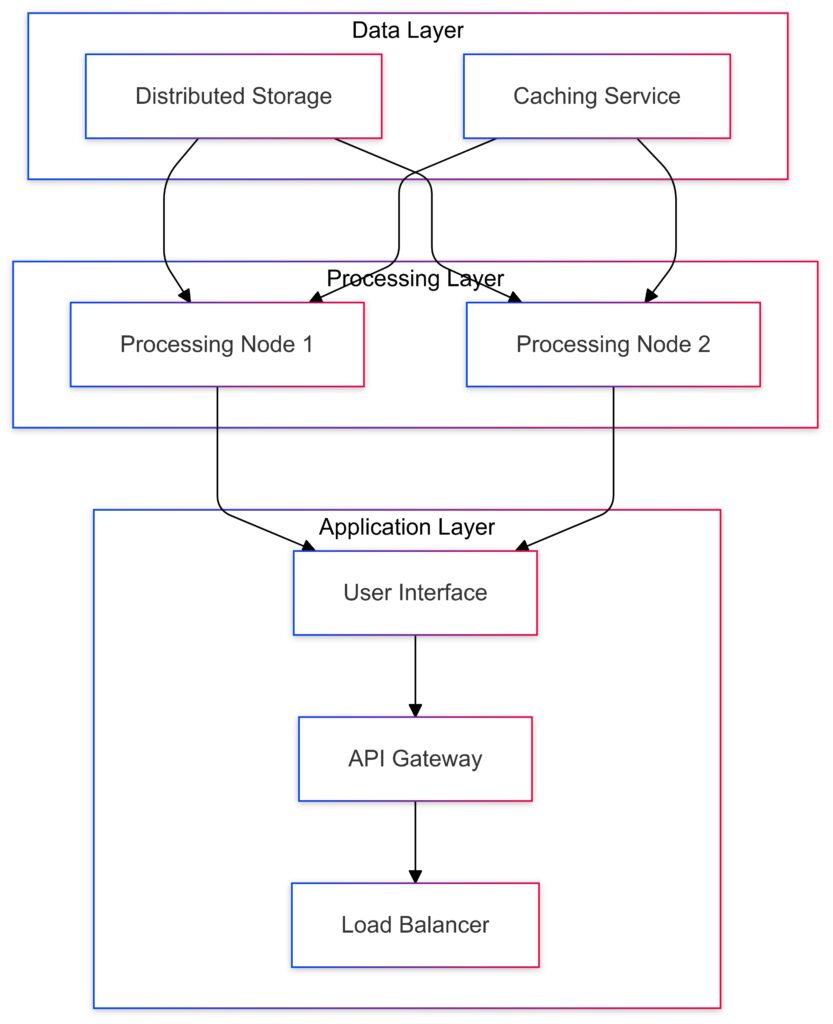
Processing Layer:Processing Nodes run recommendation algorithms in parallel.
Application Layer:User Interface delivers recommendations to users.
API Gateway handles requests and routing.
Load Balancer ensures system scalability and high availability.
This visualization captures the dependencies and flow of data across layers in the system.
Horizontal Scaling
Distribute data and processing across multiple servers to handle high traffic.
- Use sharded databases for efficient storage.
- Implement load balancers like Nginx or HAProxy to manage user requests.
Data Pipeline Optimization
Optimize data collection and processing with:
- Apache Airflow for automated workflows.
- Spark MLlib for distributed machine learning tasks.
Model Optimization
Regularly evaluate and fine-tune your system:
- Experiment with newer algorithms or architectures.
- Use tools like Optuna for hyperparameter tuning.
Staying Ahead with Emerging Trends
Explainable AI (XAI)
Users increasingly expect transparency in recommendations. Use LIME or SHAP to explain why specific items are suggested.
Federated Learning
Ensure privacy by training models directly on user devices without collecting raw data. Frameworks like TensorFlow Federated support this.
Multimodal Recommendations
Combine diverse data types (e.g., images, text, and video) to create richer recommendations. Deep learning models like Transformers excel here.
Conclusion: Building a Smarter, More Engaging Website
Creating a DIY recommendation system might seem like a complex journey, but with the right approach, it’s highly achievable. By combining thoughtful design, robust algorithms, and scalable tools, you can deliver personalized, engaging experiences that keep your users coming back for more.
From understanding the basics to implementing advanced techniques, this guide has equipped you to:
- Enhance user engagement with tailored recommendations.
- Use cutting-edge tools and frameworks to optimize performance.
- Scale and adapt your system as your website grows.
Start small, experiment with simple models, and refine your system over time. With consistent effort, your website can evolve into a smart platform that delights and retains its users.
FAQs
How much data do I need to build a recommendation system?
The amount of data required depends on your model and goals. For example:
- Content-based filtering can work with limited data, such as product descriptions or user profiles.
- Collaborative filtering typically requires a larger dataset of user interactions, like 1,000+ ratings for meaningful results.
If you’re starting small, focus on collecting high-quality data through feedback forms or usage tracking.
Can I create a recommendation system without coding?
Yes, several tools and platforms allow you to build recommendation systems with little to no coding. For instance:
- Google Recommendations AI offers a plug-and-play solution.
- Shopify apps like Recombee provide easy-to-integrate options for e-commerce sites.
However, coding gives you greater flexibility and customization.
How do I handle new users or items with no data (cold start)?
Cold start problems can be addressed in various ways:
- For new users: Ask them to choose preferences during sign-up (e.g., “Select your favorite genres”).
- For new items: Use metadata like tags, categories, or descriptions to find similar existing items.
Example: A book recommendation site can suggest trending books or popular genres to first-time users.
Which programming languages are best for building recommendation systems?
The most popular languages include:
- Python: Ideal for machine learning and has libraries like Scikit-learn, TensorFlow, and PyTorch.
- JavaScript: Useful for front-end integration with APIs.
Example: Use Python to train your model and deploy it with a Flask API, then fetch recommendations using JavaScript on your website.
How can I test if my recommendation system works?
Evaluate your system with metrics like:
- Precision and recall: Assess how accurate and relevant your recommendations are.
- Click-through rate (CTR): Measure how often users interact with recommendations.
- Conversion rate: Track if suggestions lead to purchases or sign-ups.
Example: If your CTR improves after implementing the system, it’s a strong indicator of success.
Can recommendation systems improve SEO?
Indirectly, yes! Personalized suggestions improve user engagement and dwell time, which are positive signals for search engines. For instance:
- Adding “related articles” increases page views on a blog.
- Highlighting “frequently bought together” products can boost e-commerce conversions.
What tools can I use for scalability?
For handling larger datasets and traffic, consider:
- Apache Spark for distributed data processing.
- AWS SageMaker for scalable machine learning workflows.
- Redis for fast caching of recommendations.
Example: An e-commerce site during the holiday season can use Redis to handle a surge in requests for real-time recommendations.
Can I integrate a recommendation system into any type of website?
Absolutely! Recommendation systems are versatile and can be integrated into:
- E-commerce sites: Recommend products based on past purchases or browsing history.
- Content platforms: Suggest articles, videos, or music tailored to user preferences.
- Educational websites: Offer courses or learning paths based on completed modules.
Example: A blog can use content-based filtering to suggest related posts, keeping readers engaged longer.
What’s the difference between content-based and collaborative filtering?
- Content-based filtering: Focuses on similarities between items. For instance, if a user likes an action movie, it recommends other action movies.
- Collaborative filtering: Uses user behavior patterns. If two users watch similar shows, one’s next choice can be recommended to the other.
Many websites, like Netflix, use hybrid models to combine the strengths of both.
How do I make my recommendation system fair and unbiased?
To reduce bias in recommendations:
- Avoid over-relying on popular items, which can overshadow niche options.
- Regularly audit your model for unintended biases (e.g., excluding certain user groups).
- Use diversity metrics to ensure recommendations include a mix of items.
Example: A music app can ensure its recommendations span multiple genres, even if a user has a history with just one.
How do I track the performance of my recommendation system?
Use tools and metrics like:
- Google Analytics: Monitor how users interact with recommended content.
- Precision and recall: Evaluate accuracy.
- A/B testing: Compare different recommendation strategies to see which performs better.
Example: An e-commerce store can test whether “bestseller” recommendations or “new arrival” suggestions drive more purchases.
What are some advanced techniques for recommendation systems?
Explore techniques like:
- Matrix factorization: For scalable collaborative filtering.
- Deep learning: To process complex data, such as images or user interactions.
- Reinforcement learning: To dynamically adjust recommendations in real time.
Example: Amazon uses deep learning to recommend products by analyzing user clicks, search queries, and purchase patterns.
How often should I update my recommendation system?
The frequency depends on your website’s activity level:
- High-traffic sites: Update daily or in real time to reflect changing trends.
- Smaller sites: Weekly or monthly updates may suffice.
For example, a news site should update its recommendations frequently to highlight trending stories.
Are there ethical concerns with recommendation systems?
Yes, there are several ethical considerations:
- Privacy: Ensure user data is collected and stored securely.
- Transparency: Clearly explain how recommendations are generated.
- Over-personalization: Avoid creating “filter bubbles” that limit exposure to diverse content.
Example: A video platform could show both personalized and trending content to provide balance.
What is the role of machine learning in recommendation systems?
Machine learning enables recommendation systems to:
- Identify patterns in user behavior.
- Learn and adapt over time.
- Handle large, complex datasets.
Example: Spotify’s Discover Weekly playlist uses machine learning to analyze listening habits and suggest new music.
Can a recommendation system work without user feedback?
Yes! If explicit feedback isn’t available, use:
- Implicit data: Track clicks, views, or time spent on a page.
- Popularity-based suggestions: Highlight items trending with other users.
Example: A new user on a shopping site may see recommendations like “Top Rated” or “Most Viewed” items.
What’s the easiest way to get started with a recommendation system?
- Start small with a pre-built tool like Surprise for collaborative filtering or LightFM for hybrid models.
- Use sample datasets like the MovieLens dataset to practice building and testing models.
Example: A beginner can create a basic movie recommendation system using just Python and a CSV file of ratings.
Resources
Learning Resources
Tutorials and Guides
- Coursera: Machine Learning by Andrew Ng
- Offers foundational machine learning concepts, including collaborative filtering.
- Visit Course
- Kaggle Notebooks
- Browse community-created code for recommendation systems using real-world datasets.
- Explore Kaggle
- Google AI Blog on Recommenders
- Insights into building scalable recommendation systems using TensorFlow Recommenders.
- Read Blog
- RealPython: Building a Recommendation Engine in Python
- Beginner-friendly step-by-step tutorial.
- Read Article
Tools and Frameworks
Libraries for Building Models
- Scikit-learn
- Great for basic machine learning tasks, including similarity calculations.
- Documentation
- TensorFlow Recommenders
- Tailored for recommendation systems with scalability in mind.
- Documentation
- LightFM
- Combines collaborative and content-based filtering in a hybrid approach.
- GitHub Repository
- Surprise
- Specialized in collaborative filtering algorithms and evaluation metrics.
- Read More
Platforms for Deployment
- Amazon Web Services (AWS) Personalize
- Offers ready-to-use, scalable recommendation services.
- Get Started
- Google Recommendations AI
- Simplifies integration of recommendations into your website or app.
- Learn More
- Heroku
- A simple platform to deploy your API-based recommendation system.
- Deploy Here
Datasets
For Practice and Model Training
- MovieLens
- A widely-used dataset for movie recommendations.
- Download Dataset
- Goodbooks-10k
- Book ratings and metadata for recommendation system projects.
- Find on Kaggle
- E-commerce Behavior Data
- User sessions from an online store to practice building product recommenders.
- Get on Kaggle
- Last.fm Dataset
- Music preferences and user listening habits.
- View Dataset
Open Source Projects
GitHub Repositories
- Microsoft Recommenders
- End-to-end examples of various recommendation algorithms.
- Explore Repo
- NVIDIA Merlin
- Accelerated libraries for large-scale recommender systems.
- Learn More
- Crab
- A Python library for building recommender engines.
- Visit GitHub
Communities and Forums
Where to Ask Questions
- Reddit: r/MachineLearning
- Discuss recommendation algorithms and implementation challenges.
- Join the Community
- Stack Overflow
- Ask technical questions and get answers from experienced developers.
- Post a Question
- Kaggle Community
- Engage with other data scientists and participate in competitions.
